Welcome to On Verticality. This blog explores the innate human need to escape the surface of the earth, and our struggles to do so throughout history. If you’re new here, a good place to start is the Theory of Verticality section or the Introduction to Verticality. If you want to receive updates on what’s new with the blog, you can use the Subscribe page to sign up. Thanks for visiting!
Click to filter posts by the three main subjects for the blog : Architecture, Flight and Mountains.

W.F. Quinby and his Three Flying Machine Patents
Pictured above is a patent drawing for a flying machine, designed in 1869 by Watson Fell Quinby, or W.F. for short. It’s the second of three patents for flying machines that Quinby has to his name. It shows a man flying with three wing-like sails attached to him, along with some rudimentary controls at his hands and feet. As with all of Quinby’s designs, we don’t have any photos to compare the patent drawings to, so we’ll have to assume that if he built any prototypes, they weren’t successful.
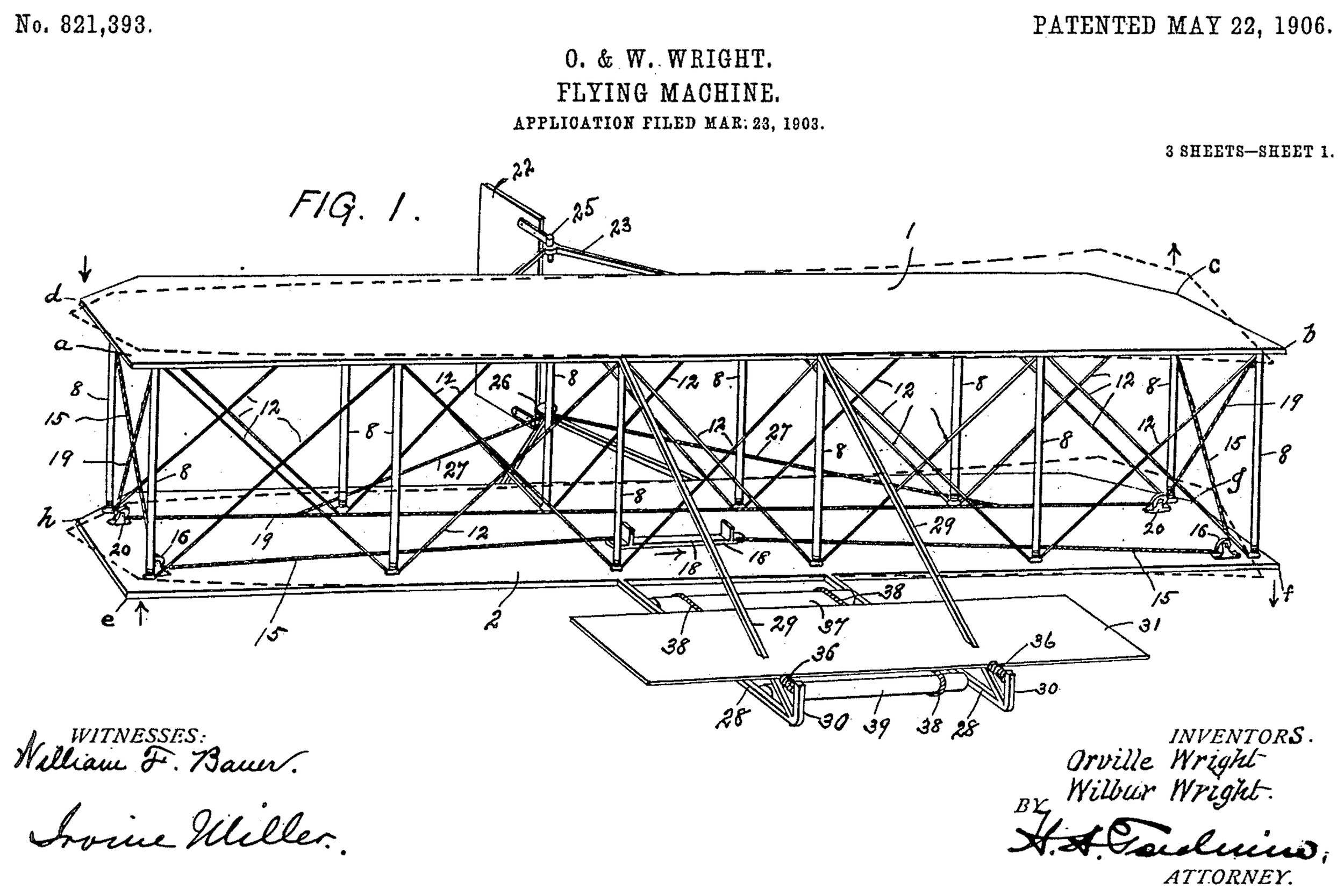
The Wright Brothers’ Flying Machine Patent
I find it fascinating to look at patent drawings of iconic designs throughout history. It’s like you’re getting a glimpse of the design process, before an object enters the public consciousness. Pictured above is a patent for the Wright Brothers’ flying machine, which has since become synonymous with the first ever powered flight. I love how drawings like this strip away any artistic style or vision, and just focus on the object itself. This is a hugely important object that lives on in the history of aviation and human achievement, but it’s rendered here in the most basic, unpretentious way.
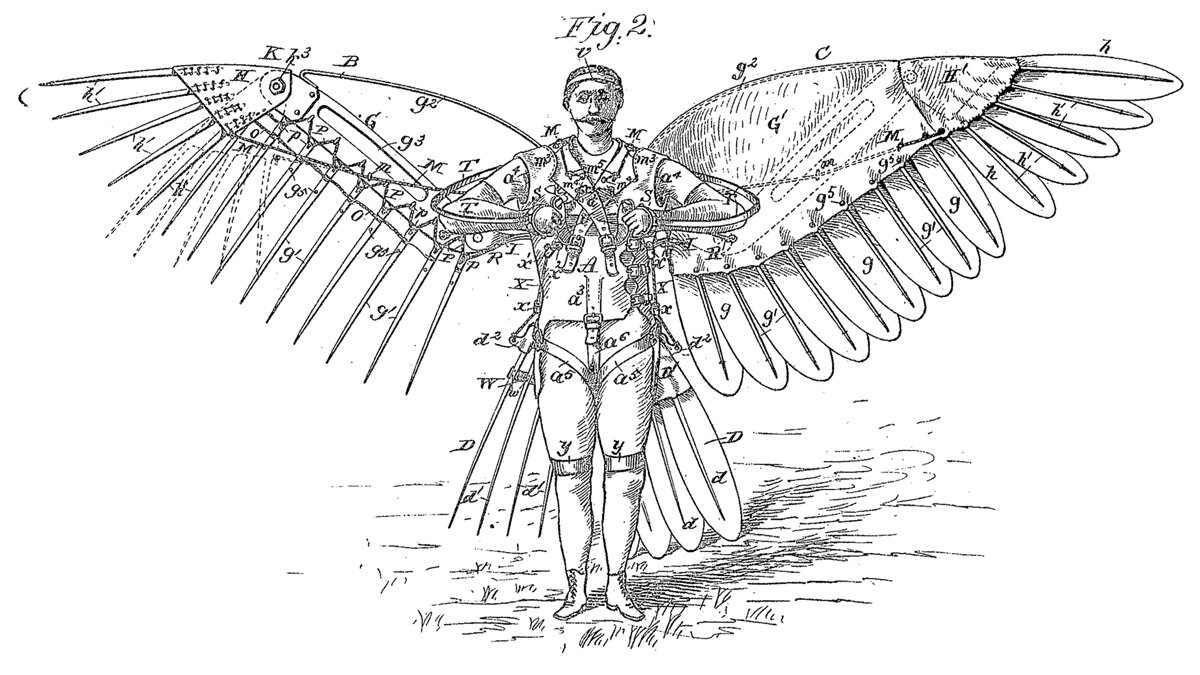
R.J. Spalding’s Birdman Suit
This is Reuben Jasper Spalding’s design for a flying machine, which he successfully patented in 1889. The design is so on-the-nose, I haven’t made up my mind whether it’s amazing or absurd. There’s a chance it’s an honest attempt at human flight, but I see it more as an homage to the earliest flying machines, which took the myth of Daedalus and Icarus and ran with it.
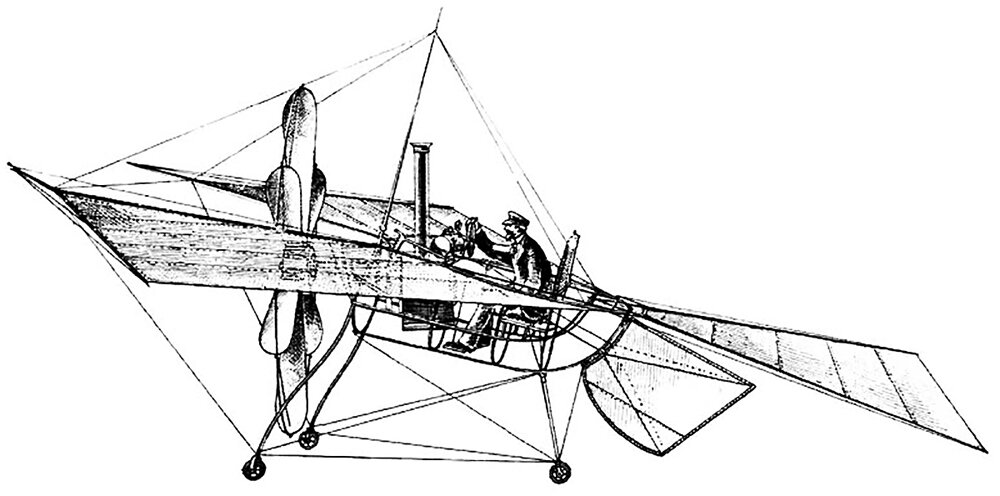
Félix du Temple’s Monoplane
Pictured above is an illustration of Félix du Temple’s design for a monoplane, which he and his brother Luis built and tested in 1874. One such test saw the machine take off from a ski-jump and glide for a bit before safely landing back on the ground. This flight, though short, gave the craft a claim to the first successful powered flight in history.
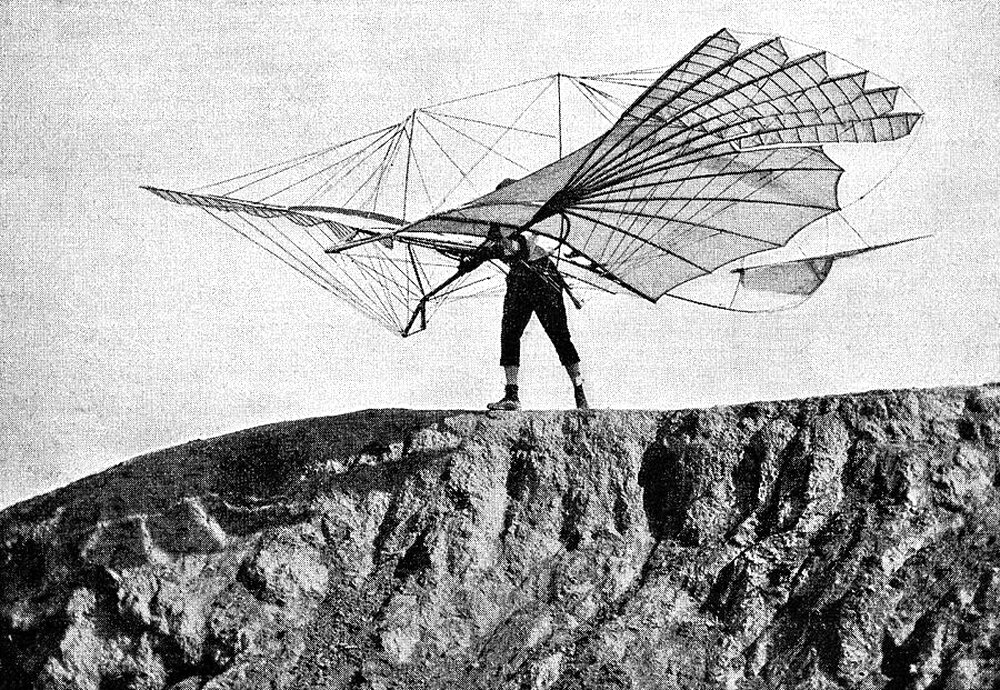
Otto Lilienthal, The 'Flying Man'
I have yet to come across a history of flight that doesn’t include Otto Lilienthal. Known as the ‘Flying Man’, Lilienthal was a pioneer of aviation best known for his experiments with gliders and human flight. He made thousands of successful test flights throughout his career, and there are myriad photographs of him before and during these test flights. Pictured above is one such photo of him getting ready to make the leap off a hilltop.
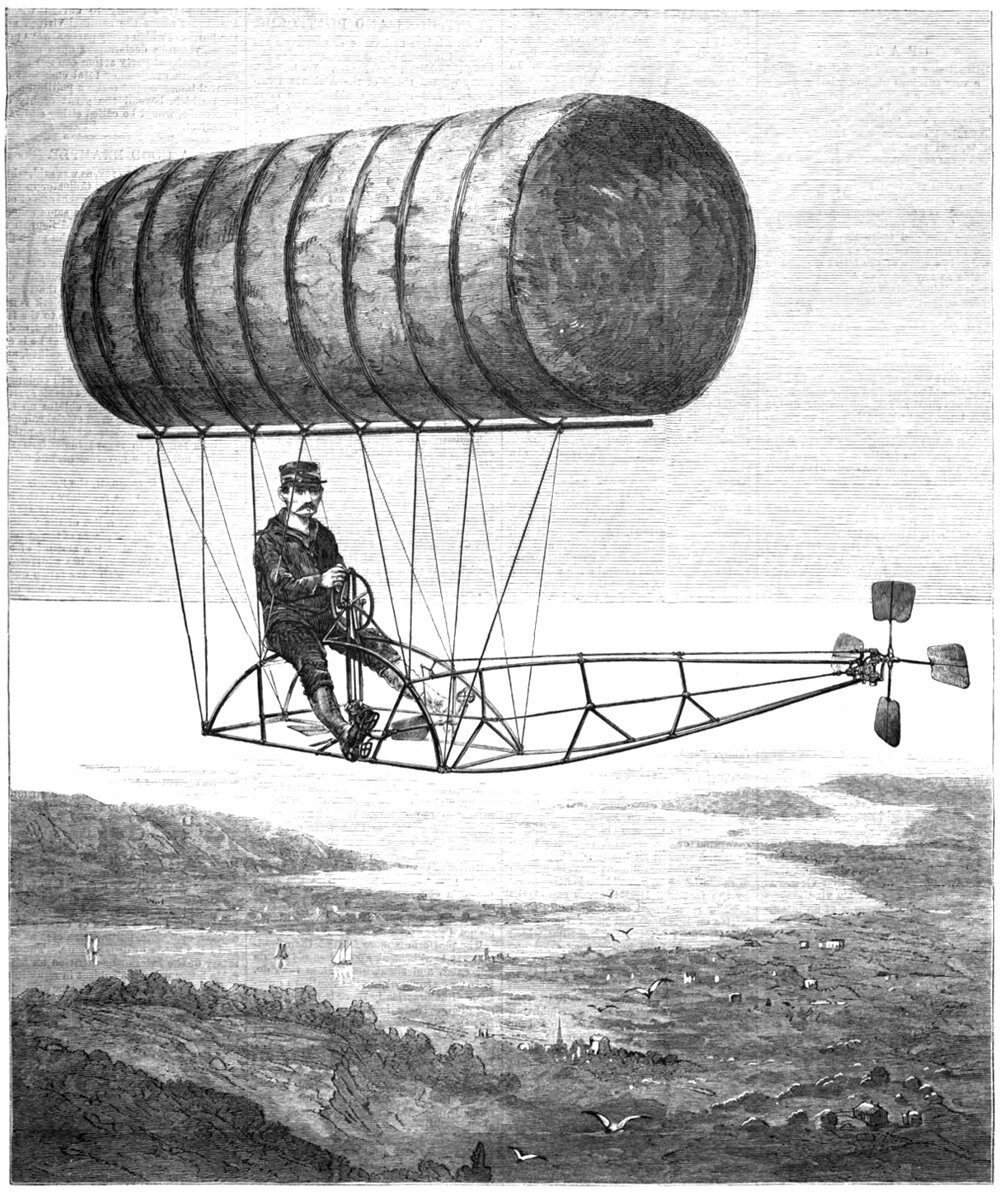
Charles F. Ritchel's Dirigicycle
This is the cover of Harper’s Weekly from July 13th, 1878. The issue featured an etching of a man sitting on a tubular frame, suspended high in the air by what looks like an elongated bail of hay. The man pictured is Charles F. Ritchel, and he’s piloting his design for a dirigible. A dirigible is an airship capable of being steered (it comes from the Latin word dirigere, which means ‘to direct’), and the bail of hay is in fact a bag of rubberized fabric called ‘gossamer cloth’, filled with hydrogen gas.
